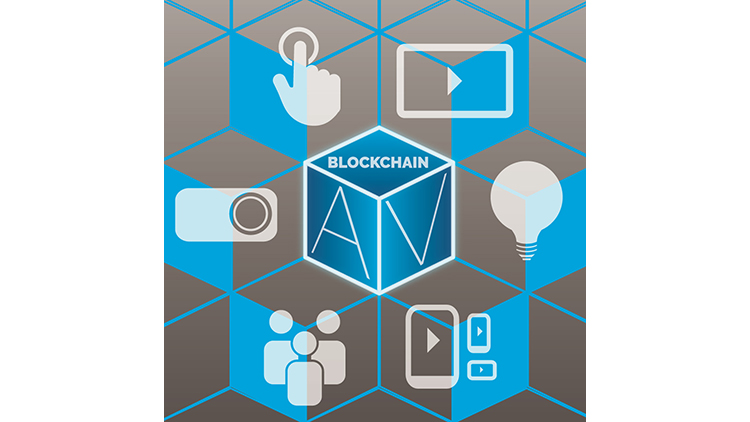As cyberattacks continue to make headlines, the technology known as blockchain offers new hope for securing data. Blockchain is a cryptography-based shared ledger for digitally recording the history of transactions — it cannot be altered. The global intelligence firm Gartner Research included blockchain in its 2017 Hype Cycle for Emerging Technologies as a potentially transformative digital platform especially as machine learning becomes more popular. Blockchain's decentralized model is scalable, another benefit for deployment on the enterprise level.

We often think of blockchain vis-à-vis finance and Internet transactions, most notably BitCoin, but could it also carry potential for professional AV applications, AV-over-IP, and data from the Internet of Things (IoT)?
The promise of IoT is that machine-to-machine communication can be programmed and streamlined, and connected devices are constantly recording data. For example, on a connected university or enterprise campus, an IoT system could included network-connected lights, HVAC, occupancy sensors, laser projectors, projection screens, and huddle space technologies. That data is a valuable tool that tech managers can use to better understand AV usage and design efficacy. If parsed intelligently, data from connected systems might also help plan for more effective installations. Tech managers, armed with specific insights gleaned from IoT data, can make cogent RFPs or capital requests for AV. IoT can also help economize logistics by distributing data to displays in real-time. Additionally, Intel forecasts that there will be more than 20 billion connected devices by 2020, so it’s safe bet that, going forward, there will be more IoT in commercial buildings, not less.
Where the IoT offers advantages for professional AV applications, there are also threats. One of the most notable issues with IoT is security: one bad actor can compromise the entire chain. If even one smart lightbulb gets targeted in a vulnerable system, perhaps via botnet attack, it could bring a system down. Or a device itself can go rogue. In an IoT whitepaper, InfoComm (now AVIXA) explains that as the number of networked devices increases, "so do the security threats that AV deployments face. The encryption of all traffic on an AV network is essential, and AV systems also must be capable of authenticating the identity of authorized users. Many experts see security as the biggest impediment to widespread adoption of IoT technologies." Enter blockchain, the decentralized method of protecting data with its built-in, adaptable safeguards. Could blockchain be a missing link for securing digital AV systems?
Phil Hippensteel, PhD, instructor of information systems at Penn State Harrisburg, opined that for securing AV data, "I think we need something [like Blockchain]. Each AV vendor seems to have their own vision about the best way to accomplish anything. If blockchain is a common method to store transactional data and it can be made to work, then I think it would be extremely useful.”
While blockchain is available in open-source platforms, and it offers quantifiable benefits, it is not the panacea, Tractica warns in a new report. Analysts urge businesses to "avoid jumping on the blockchain bandwagon and instead view blockchain as a series of technological modules and concepts to selectively choose, apply, and/or complement other emerging technology trends.”
Blockchain has physical limits. A diversity of nodes will help defend against the so-called "51 percent” attacks that could compromise blockchain-supported data. But on one small campus or in one building, the required physical diversity of blockchain users is not possible.
Perhaps the most profound potential of blockchain, when applied in a commercial AV context, is that it offers a reimagining of connected infrastructures and the vetting of online identities as well as the smart devices connected to them. Blockchain may not be the immediate answer to the question of how to secure networked AV and IoT, but its paradigm shift may inspire the next generation of secure methodologies.
Margot Douaihy is the editorial director of AV Technology and an advisor at Franklin Pierce University.
MORE INFO
AVIXA (InfoComm) Whitepaper: ProAV & The IoT
https://www.infocomm.org/cps/rde/xbcr/infocomm/InfoComm_IoT_Apr16_Summary.pdf
IoT and Digital Signage Come Together to Improve Logistics
http://www.necdisplay.com/white-papers/selected/106
Intel IoT Gateway
https://www.intel.com/content/dam/www/public/us/en/documents/product-briefs/gateway-solutions-iot-brief.pdf
Top Trends in the Gartner Hype Cycle for Emerging Technologies, 2017
http://www.gartner.com/smarterwithgartner/top-trends-in-the-gartner-hype-cycle-for-emerging-technologies-2017/
Tractica: Three Myths about Blockchain
https://www.tractica.com/artificial-intelligence/three-myths-about-blockchain/
Understand the fundamentals of IBM Blockchain
https://www.ibm.com/blockchain/what-is-blockchain.html











